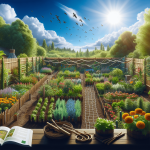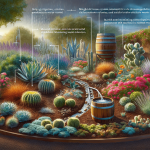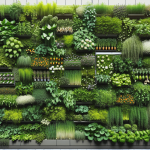This post may contain affiliate links. As an Amazon Associate, we may earn commissions from qualifying purchases.
Creating a sustainable and eco-friendly garden may seem like a daunting task, but with a few simple steps, you can easily transform your outdoor space into a green oasis. By implementing environmentally friendly practices such as composting, using native plants, and conserving water, you can reduce your carbon footprint and contribute to the preservation of our planet. Whether you’re a novice gardener or have a green thumb, this article will guide you through the process of creating a sustainable and eco-friendly garden that not only benefits the environment but also enhances the beauty of your surroundings. Creating a sustainable and eco-friendly garden is not only beneficial for the environment, but it can also provide a beautiful and thriving space for you to enjoy. By following these ten steps, you can make conscious choices that promote biodiversity, conserve resources, and minimize negative impacts on the planet. Let’s dive into each of these steps in more detail.
1. Choose Native Plants
When selecting plants for your garden, it is important to consider the local climate and conditions. Native plants are adapted to thrive in these specific environments, which means they require less maintenance and are better equipped to resist pests and diseases. Research native plants that are suitable for your area and select a variety of species to promote a diverse ecosystem in your garden. By choosing native plants, you will also be supporting local wildlife, such as birds and insects, that rely on them for food and shelter.
2. Practice Water Conservation
Water is a precious resource, and conserving it in your garden will not only benefit the environment but also save you money on utility bills. There are several ways to practice water conservation:
- Collect rainwater: Install rain barrels or other water collection systems to capture rainwater from your roof. This water can then be used to irrigate your garden during dry periods.
- Install a drip irrigation system: Drip irrigation delivers water directly to the roots of plants, minimizing water waste through evaporation or runoff.
- Use mulch to retain moisture: Apply a layer of organic mulch, such as bark chips or straw, around your plants. This will help retain moisture in the soil, reduce weed growth, and regulate soil temperature.
- Water plants in the early morning or evening: Watering your plants during cooler parts of the day can minimize evaporation and ensure that plants have enough time to absorb the water before the heat of the day.
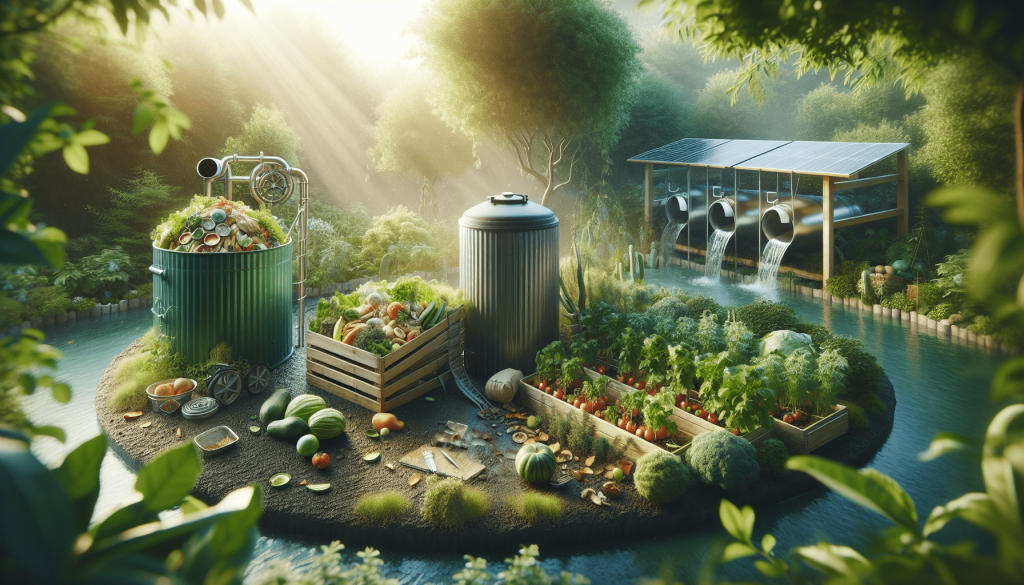
3. Reduce Chemical Use
Chemical pesticides and herbicides can have harmful effects on the environment, including contaminating water sources and harming beneficial insects and wildlife. By reducing or eliminating their use in your garden, you can create a healthier and more sustainable ecosystem. Instead, opt for natural pest control methods:
- Avoid synthetic pesticides and herbicides: Look for natural alternatives, such as insecticidal soaps or neem oil, to control pests without harming beneficial insects.
- Use organic fertilizers: Instead of chemical fertilizers, use organic options like compost or well-aged manure to provide essential nutrients to your plants.
- Compost kitchen and garden waste: Composting is a great way to recycle organic materials and create nutrient-rich soil amendments. By composting your kitchen scraps and garden waste, you can reduce waste sent to landfills and improve the health of your garden.
4. Create a Wildlife Habitat
Incorporating elements that support wildlife can enhance the biodiversity and ecological balance in your garden. Here are a few ways to create a wildlife-friendly habitat:
- Provide food sources for birds and insects: Plant native trees, shrubs, and flowers that produce berries, nectar, or seeds to attract and feed a variety of wildlife.
- Include water features: Create a small pond, birdbath, or even a simple water dish to provide a water source for birds, insects, and other wildlife.
- Plant native flowers to attract pollinators: Bees, butterflies, and other pollinators are crucial for the reproduction of many plants. Plant a diverse selection of native flowers to attract and support these important insects.
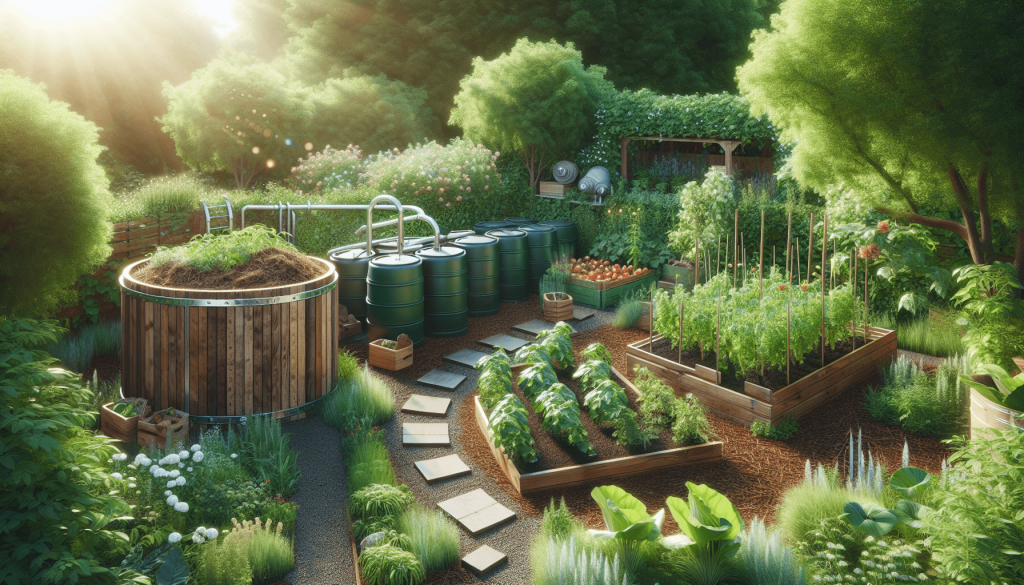
5. Use Renewable Resources
When designing and constructing structures in your garden, consider using materials that have a low environmental impact and can be replenished over time. Some ways to incorporate renewable resources include:
- Select sustainable materials for garden structures: Choose materials like bamboo or sustainably sourced wood for fences, trellises, or raised beds.
- Use reclaimed or recycled materials for pathways and borders: Repurpose materials like old bricks, stones, or reclaimed wood for pathways or borders. This can not only add character to your garden but also minimize waste and the demand for new materials.
6. Practice Integrated Pest Management
Integrated Pest Management (IPM) is a holistic approach to pest control that aims to minimize the use of chemicals while managing pest populations effectively. Here are some key principles of IPM:
- Monitor and identify pests: Regularly inspect your plants for signs of pest damage or infestation. Identifying the specific pests will help you determine the most appropriate control methods.
- Encourage natural pest predators: Plant flowers that attract beneficial insects like ladybugs, lacewings, or praying mantises. These insects feed on common garden pests and can help keep their populations in check.
- Use physical barriers or traps: If pests become problematic, consider using physical barriers, such as netting or row covers, to protect your plants. Traps, like sticky traps for flying insects or beer traps for slugs, can also be effective for controlling certain pests before resorting to chemical controls.
7. Foster Soil Health
Healthy soil is the foundation of a successful garden. By prioritizing soil health, you can create an environment where plants thrive and reduce the need for synthetic fertilizers or pesticides. Here are some tips for fostering soil health:
- Test and amend soil as needed: Conduct a soil test to understand its pH level and nutrient composition. Based on the results, amend the soil with organic matter or soil conditioners to improve its structure and fertility.
- Use organic mulch to improve soil structure and fertility: As mentioned earlier, applying organic mulch around your plants helps retain moisture. It also breaks down over time, enriching the soil with nutrients and improving its structure.
- Rotate crops to prevent nutrient depletion: Planting different crops in different areas of your garden each year helps prevent the buildup of pests and diseases. It also allows for a more balanced nutrient uptake and reduces the need for additional fertilizers.
8. Create Compost
Composting is a fantastic way to reduce waste while creating nutrient-rich soil amendments for your garden. Follow these steps to create your own compost:
- Set up a compost bin or pile: Choose an area in your garden or invest in a compost bin to contain your compost. This can be a simple enclosed bin or even a three-bin system for larger gardens.
- Add kitchen scraps, yard waste, and shredded paper: Collect kitchen scraps like fruit and vegetable peels, coffee grounds, and eggshells. Combine them with yard waste such as leaves, grass clippings, and small branches. To create a balanced compost pile, add a layer of shredded paper or cardboard to provide carbon-rich material.
- Turn and water compost regularly: Every few weeks, use a garden fork or shovel to turn the compost pile. This helps aerate the pile and speeds up the decomposition process. Make sure to water the compost regularly to maintain moisture levels but avoid it becoming too wet.
9. Limit Non-Essential Energy Use
Reducing energy consumption in your garden can contribute to a more sustainable lifestyle. Here are some ways to limit non-essential energy use:
- Use solar-powered garden lights: Install solar-powered lights to illuminate your garden at night. They charge during the day and provide a soft, eco-friendly glow in the evenings.
- Minimize the use of electric tools: Consider using manual tools, such as hand pruners or a garden fork, instead of electric or gas-powered alternatives. This not only reduces energy consumption but also provides an opportunity for a more tactile and enjoyable gardening experience.
- Consider using manual or hand-powered tools: Where possible, opt for manual or hand-powered tools like a push mower or a manual weed puller. These tools require physical effort but can be a rewarding and environmentally friendly choice.
10. Educate Yourself and Others
Continuing to educate yourself on sustainable gardening practices is crucial for ongoing improvement and innovation in your garden. Here are a few ways to expand your knowledge:
- Read books and articles on sustainable gardening practices: There are many resources available that delve into sustainable gardening techniques. Look for books or articles that align with your interests and gardening goals.
- Attend workshops or classes: Local nurseries, gardening clubs, or community centers often offer workshops or classes on sustainable gardening. These can provide valuable insights, practical skills, and an opportunity to connect with like-minded individuals.
- Share knowledge with friends and neighbors: Spread the word about sustainable gardening practices! Share your experiences, tips, and successes with friends, neighbors, or even on social media platforms. This can inspire others to adopt more sustainable practices and create a positive ripple effect.
By following these ten steps, you can create a sustainable and eco-friendly garden that not only benefits the environment but also provides a sanctuary for you and the wildlife around you. Embrace these practices, be mindful of your choices, and watch your garden thrive while making a positive impact on the world around you. Happy gardening!



